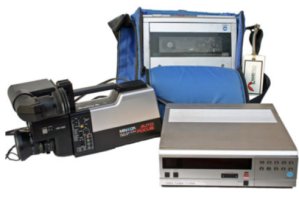Long time lurker, but I can't resist the siren call to share my opinion.
Here's what I would do if I were running the show at Canon - not what I personally want as a camera user, but what I think makes business sense.
RP replacement -> R100
This would be the EVF-less model. To go with it, design an ultra low end kit lens - something in the ballpark of a 28-70mm f/5.6-10. The goal (and reason to cut the EVF) would be to hit a price point as low as possible while still having a full frame sensor, hopefully within range of the T8i. With the ultra cheap kit lens, image quality should be similar to base APS-C cameras in that price range. Advertising would lean heavily on the "professional grade full frame sensor" that could "use the full capabilities of the RF lens system" and "grow with you on your photographic journey" with the intent of shunting sales that would have gone to competitors' crop sensor cameras (or EF-S/EF-M) into the RF system. Of course a detachable viewfinder would be available, including as a kit. I would lean towards reusing the R sensor to give it a higher megapixel count compared to its crop sensor rivals, but if that's too expensive to make the price point work then the R6 or even RP sensor would be fine - whatever is required to get that base price down.
And on that note, the infamous "Canon cripple hammer" would be applied liberally. Software would be bare bones, essentially T8i/M50 level with no extra frills. *But* I would start offering paid firmware feature upgrades. Want full frame 4k video? That'll be $300 please. Intervalometer? Another $40, thank you very much. And so on. The idea would be to generate a new revenue stream from customers upgrading their camera firmware - one that from Canon's perspective has close to no incremental cost for each sale, relatively low development cost, and will be completely unaffected by supply chain shortages. And it actually could be a win for customers too. At the entry level, full frame is available at a price point never seen before. Yet if there's one specific feature you want, you no longer have to buy the more expensive body with all the bells and whistles you don't need. And of course, the photographers that can afford the everything-including-the-kitchen-sink R3/5/6 will continue to happily buy them for a premium while turning their noses up at the cheaper bodies - no change needed there, the target markets are completely different.
Crop sensor RF -> R7
Drop an M6II 32mp sensor in an R6 body and ship it. Minimal development cost since all the pieces are already there. It's a niche, but for such a low cost to try it why not.
R replacement -> R8
I would have basically done an R quality body with the R5 sensor, but it sounds like Canon are developing a new sensor instead. Still a single card slot, still no IBIS. Full frame 4k, improved AF trickled ddown from the R5/6, and the better sensor would be the main selling points. Similar price point to what the R launched at.
Not mentioned in this rumour are the R1 (spend the time and money to make it unquestionably the best FF camera money can buy), a high resolution R5s (identical to the R5 except the sensor) and an R10 that would essentially be the R6 sensor in a cheaper body with no IBIS, single card slot, and lower end software that could be upgraded like the R100. Those would be for 2023/2024.
As far as the EF-S/EF-M lines go, I would continue the current strategy - spend as little as possible on these systems while riding the long tail of sales into the sunset. Continue to manufacture and sell existing bodies and lenses. Periodically assess how sales are doing. If sales transfer over into the RF system through the R100 and R10, let the other systems slowly dwindle. If they continue strong but competitors' cameras get a significant upgrade cycle, do one last release of a T9i/M50III that drop the 32mp M6II sensor into the current T8i/M50II bodies.


